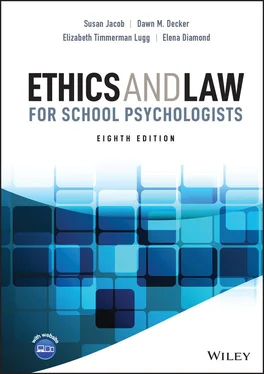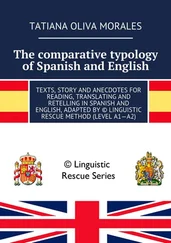STUDY AND DISCUSSION
Questions for Chapter 2
1 What are the three sources of public school law in the U.S. legal system?
2 Why was the Bill of Rights passed? What is the significance of the 10th Amendment with regard to public education? Do citizens have a right to a public education under the U.S. Constitution?
3 Identify two aspects of the 14th Amendment that have been extremely important in court decisions regarding the public schools.
4 What was the significance of the Supreme Court decision in Tinker v. Des Moines Independent Community School District (1969)?
5 If public education is a duty of the states, how does the U.S. Congress have the power to shape educational policy and practices? Cite two examples of federal education legislation and two examples of federal antidiscrimination legislation.
6 What is case law, and why is it important?
7 What is civil liability?
8 What is professional malpractice? What aspects of the situation do courts evaluate to determine whether malpractice occurred? How is appropriate standard of care generally determined?
The majority of public school statutory law is enacted at the state level. School psychologists must become familiar with the laws pertinent to the delivery of school psychological services in the state where they are employed. Obtain a copy of the rules governing special education and school psychological services in the state where you live. Copies of state laws affecting education typically can be downloaded from the state’s Web site.
1 1This case concerned an Arkansas state law that prohibited the teaching of the Darwinian theory of evolution in the schools. The Supreme Court held the law to be an unconstitutional violation of First Amendment safeguards of freedom of speech and inquiry and belief.
2 2The term “handicaps,” rather than “disability,” is used when historically accurate.
3 3Title VI of the Civil Rights Act of 1964.
4 4Title IX of the Education Amendments of 1972.
5 5Title II of the Americans with Disabilities Act of 1990.
6 6As used by NASP (2017b), the acronym LGBTQ+ is intended to be inclusive of students of diverse sexual orientations, gender identities, and/or gender expressions.
Конец ознакомительного фрагмента.
Текст предоставлен ООО «ЛитРес».
Прочитайте эту книгу целиком, купив полную легальную версию на ЛитРес.
Безопасно оплатить книгу можно банковской картой Visa, MasterCard, Maestro, со счета мобильного телефона, с платежного терминала, в салоне МТС или Связной, через PayPal, WebMoney, Яндекс.Деньги, QIWI Кошелек, бонусными картами или другим удобным Вам способом.












